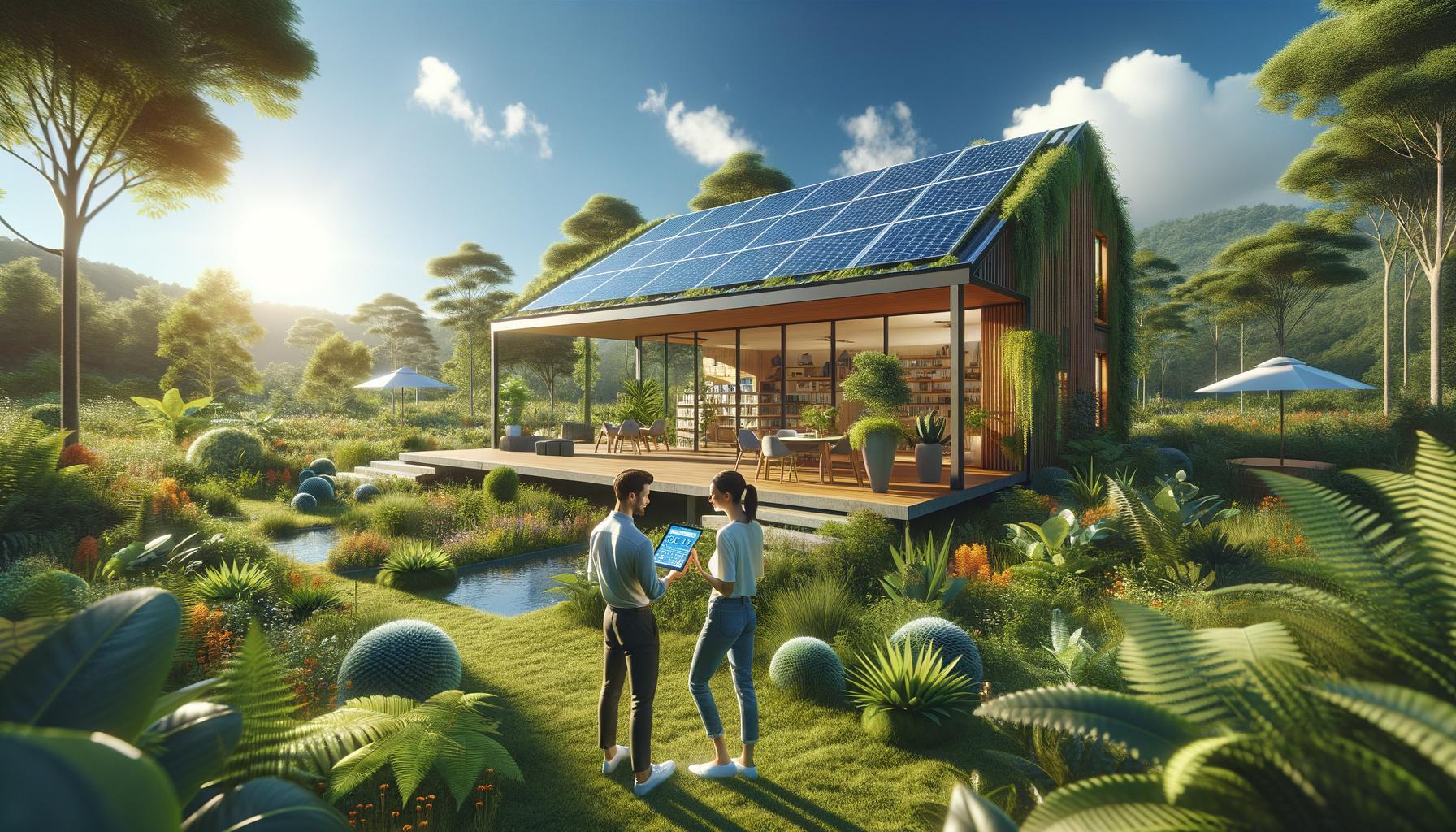
At Home Owners Association, we’ve seen a growing interest in eco-friendly house building. The demand for sustainable homes is on the rise, with more homeowners seeking ways to reduce their environmental impact.
Building an eco-friendly house isn’t just about using green materials; it’s a holistic approach that considers energy efficiency, water conservation, and long-term sustainability. In this post, we’ll explore practical solutions to help you create a home that’s both environmentally responsible and comfortable.
Sustainable Building Materials: The Foundation of Eco-Friendly Houses
At Home Owners Association, we’ve observed a significant shift towards sustainable building materials in recent years. Homeowners increasingly recognize the long-term benefits of these eco-friendly options. Let’s explore some of the most effective sustainable building materials for your eco-friendly house.
Reclaimed and Recycled Materials
Reclaimed wood stands out as a popular choice for sustainable building. This material not only reduces environmental impact but also adds unique character to your home. Each piece of reclaimed timber tells a story and possesses a distinctive aesthetic appeal that cannot be replicated with new timber.
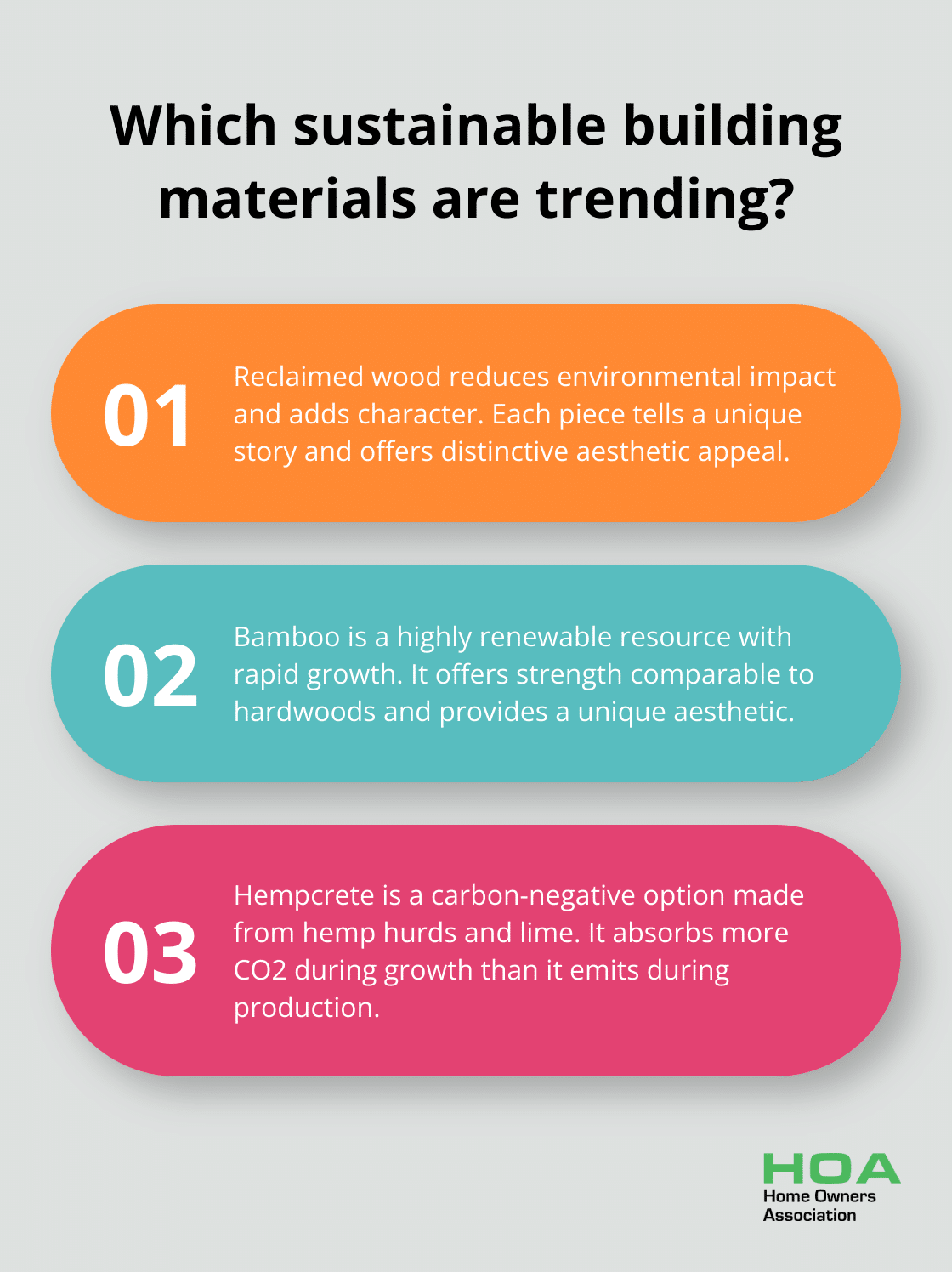
Recycled steel offers another excellent option for eco-conscious builders. The use of recycled steel in construction significantly reduces the energy required for production compared to new steel.
Low-Impact Natural Materials
Bamboo has gained traction as a sustainable building material. Its rapid growth rate makes it a highly renewable resource. This fast-growing grass offers strength comparable to some hardwoods while providing a unique aesthetic appeal.
Hempcrete, a mixture of hemp hurds and lime, represents an innovative natural material. This carbon-negative option absorbs more carbon dioxide during its growth than it emits during production, making it an excellent choice for environmentally conscious builders.
Innovative Green Building Products
Mycelium, the root structure of fungi, emerges as a groundbreaking building material. Builders can grow it into specific shapes and sizes, creating strong, lightweight, and fire-resistant building components. Recent research showcases how biomaterials like mycelium have emerged as catalysts for expanding possibilities within various fields, including construction.
Transparent wood represents another innovative product on the horizon. This material offers greater strength and insulation than glass. Its potential to revolutionize window construction excites many in the sustainable building industry.
When selecting sustainable materials for your eco-friendly house, consider their entire lifecycle – from production to disposal. Look for materials with low embodied energy, high recycled content, and the ability to be recycled or biodegraded at the end of their life.
As we move forward in our exploration of eco-friendly house building, let’s turn our attention to another critical aspect: energy efficiency and renewable energy solutions. These elements work hand-in-hand with sustainable materials to create truly green homes.
Maximizing Energy Efficiency in Eco-Friendly Homes
At Home Owners Association, we observe a significant shift towards energy-efficient home designs. This trend doesn’t just reduce utility bills; it creates comfortable, sustainable living spaces that minimize environmental impact.
The Power of Passive Solar Design
Passive solar design revolutionizes eco-friendly construction. This approach uses the sun’s energy for heating and cooling, which significantly reduces reliance on artificial systems. Glazed windows and doors have a significant effect on your home’s thermal performance – up to 40% of a home’s heating energy can be lost and up to 87% gained through them.
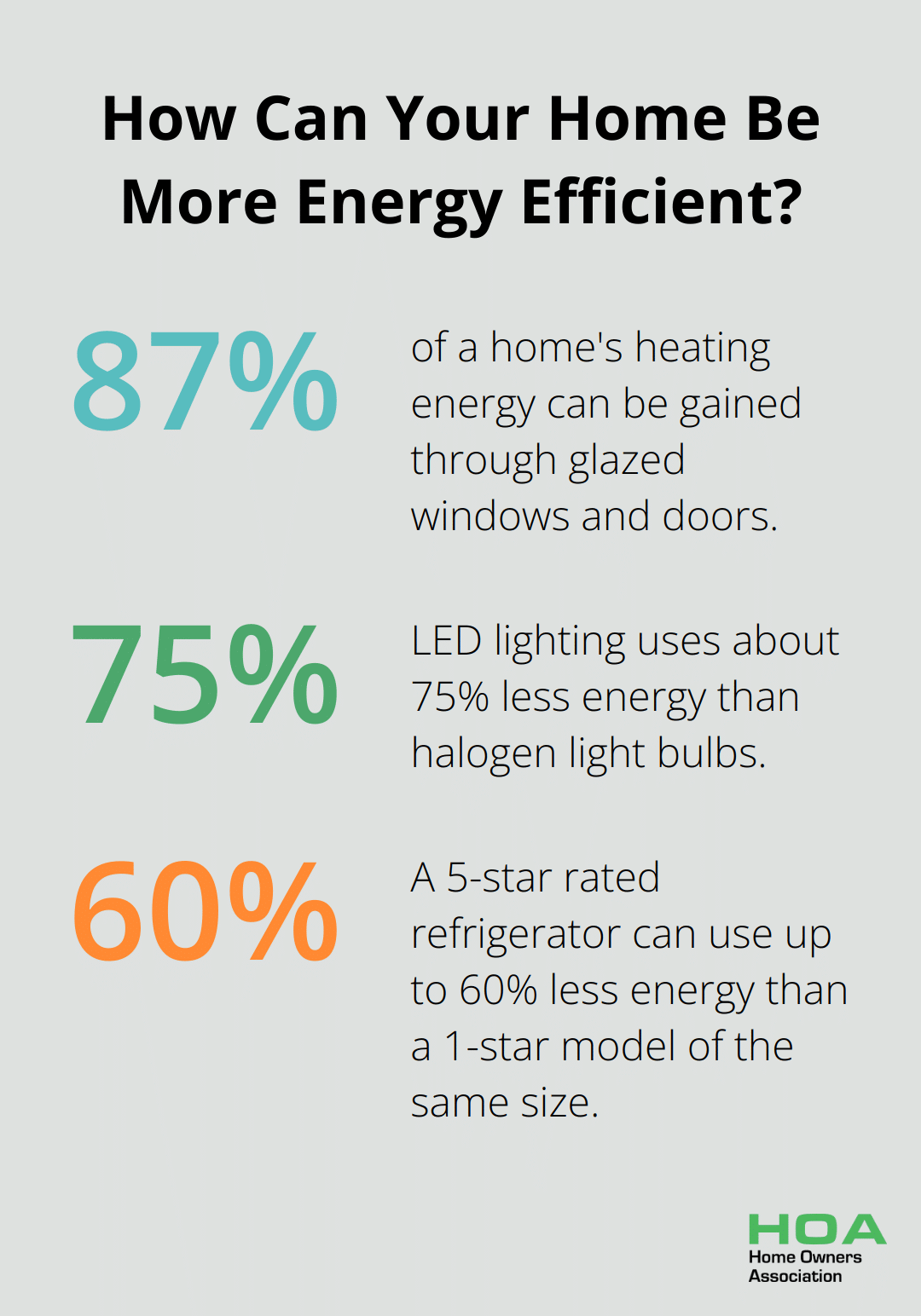
To implement passive solar design effectively, consider these key elements:
- Orientation: Position your home to maximize northern sun exposure in winter and minimize it in summer.
- Thermal mass: Use materials like concrete floors or brick walls to absorb and store heat.
- Glazing: Install double-glazed windows on the north side to capture warmth and minimize heat loss.
High-Performance Insulation: The Silent Guardian
Insulation plays a vital role in energy-efficient homes. The Australian Building Codes Board reports that proper insulation can reduce heating and cooling energy consumption by up to 40%.
When selecting insulation, consider these factors:
- R-value: Choose insulation with a high R-value for better thermal resistance.
- Material: Opt for eco-friendly options like recycled polyester or sheep’s wool.
- Installation: Ensure professional installation for maximum effectiveness.
Renewable Energy Solutions
Solar panels have become increasingly affordable and efficient. The Clean Energy Council reports that the average Australian household can save up to $540 per year on electricity bills with a 5kW solar system.
Small-scale wind turbines, while less common in residential settings, can excellently complement solar in windy areas. However, they require careful site assessment and may face zoning restrictions.
Energy-Efficient Appliances and Lighting
Energy-efficient appliances and lighting can dramatically reduce your home’s energy consumption. The Australian Government’s Energy Rating system makes it easy to compare the efficiency of different products.
LED lighting uses about 75% less energy than halogen light bulbs and lasts 5 to 10 times longer, greatly reducing replacement costs. When selecting appliances, look for those with high star ratings. A 5-star rated refrigerator can use up to 60% less energy than a 1-star model of the same size.
These energy-efficient strategies don’t just build a house; they create a sustainable home that’s comfortable, cost-effective, and kind to the environment. Now, let’s turn our attention to another critical aspect of sustainable living: water conservation and management.
Water-Smart Homes: Conserving Our Most Precious Resource
Australia faces increasing water scarcity and rising utility costs. This reality makes the implementation of smart water management strategies essential for eco-friendly homes. Let’s explore effective methods to conserve water and reduce environmental impact.
Rainwater Collection Systems: Harnessing the Sky
Rainwater harvesting transforms eco-friendly homes. In 2004, 98% of households in the Brisbane Statistical Division used mains water while 4.8% sourced water from a rainwater tank. A 5,000-liter tank can save up to 100,000 liters of mains water annually.
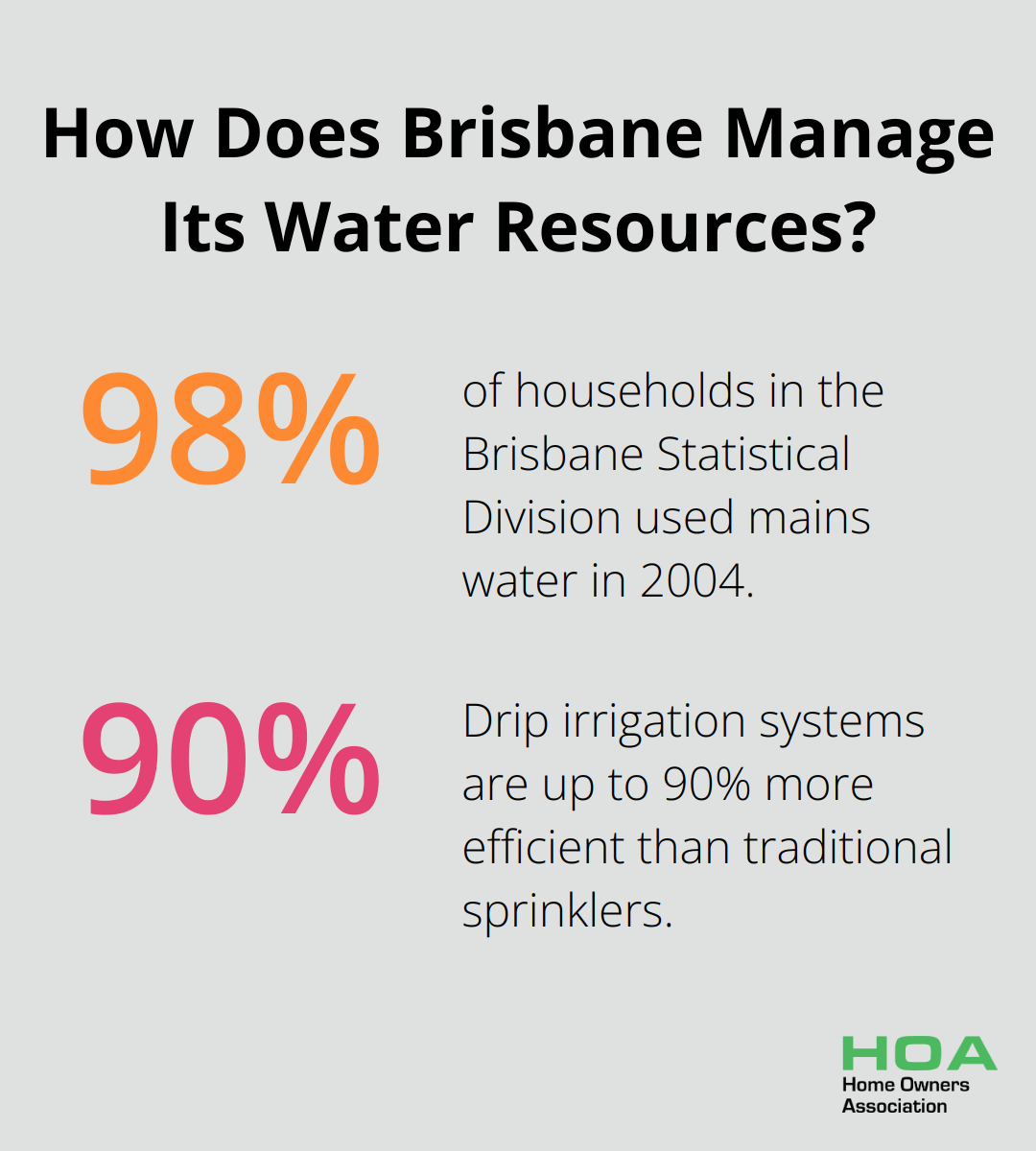
To maximize efficiency:
- Connect your rainwater tank to toilets, washing machines, and outdoor taps
- Invest in a quality filtration system
- Perform regular maintenance checks
The initial investment pays off quickly-you’ll notice a significant reduction in water bills within the first year.
Greywater Recycling: Giving Water a Second Life
Greywater systems reuse water from showers, sinks, and laundry for irrigation or toilet flushing.
When installing a greywater system:
- Ensure compliance with local regulations
- Use biodegradable soaps and detergents to prevent soil contamination
- Schedule regular maintenance for optimal performance and longevity
Water-Efficient Fixtures: Small Changes, Big Impact
Upgrading to water-efficient fixtures reduces water usage significantly. The Water Efficiency Labelling and Standards (WELS) scheme helps identify water-efficient products.
Consider these upgrades:
- Install a 4-star rated showerhead (uses 7-9 liters per minute, compared to old models using up to 25 liters)
- Switch to dual-flush toilets (can save up to 51 liters per person daily)
- Use water-efficient dishwashers and washing machines
A family of four can save over 200,000 liters annually by switching to efficient fixtures.
Water-Wise Landscaping: Embracing Nature
Traditional lawns consume excessive water. Xeriscaping-landscaping that reduces or eliminates irrigation needs-gains popularity in Australia. The City of Melbourne reports that xeriscaping can reduce outdoor water use by 50-75%.
To create a water-wise landscape:
- Choose native plants adapted to local climate conditions
- Group plants with similar water needs
- Use mulch to retain soil moisture
- Install a drip irrigation system (up to 90% more efficient than traditional sprinklers)
These water conservation strategies not only save money but also preserve our most precious resource for future generations. By implementing these methods, you contribute to a more sustainable Australia (while potentially increasing your property value).
Final Thoughts
Building an eco-friendly house represents a commitment to a sustainable future. We at Home Owners Association have observed the transformative impact of green building practices on Melbourne’s housing landscape. Eco-friendly houses offer reduced utility bills, improved indoor air quality, and enhanced comfort while minimizing environmental footprints.
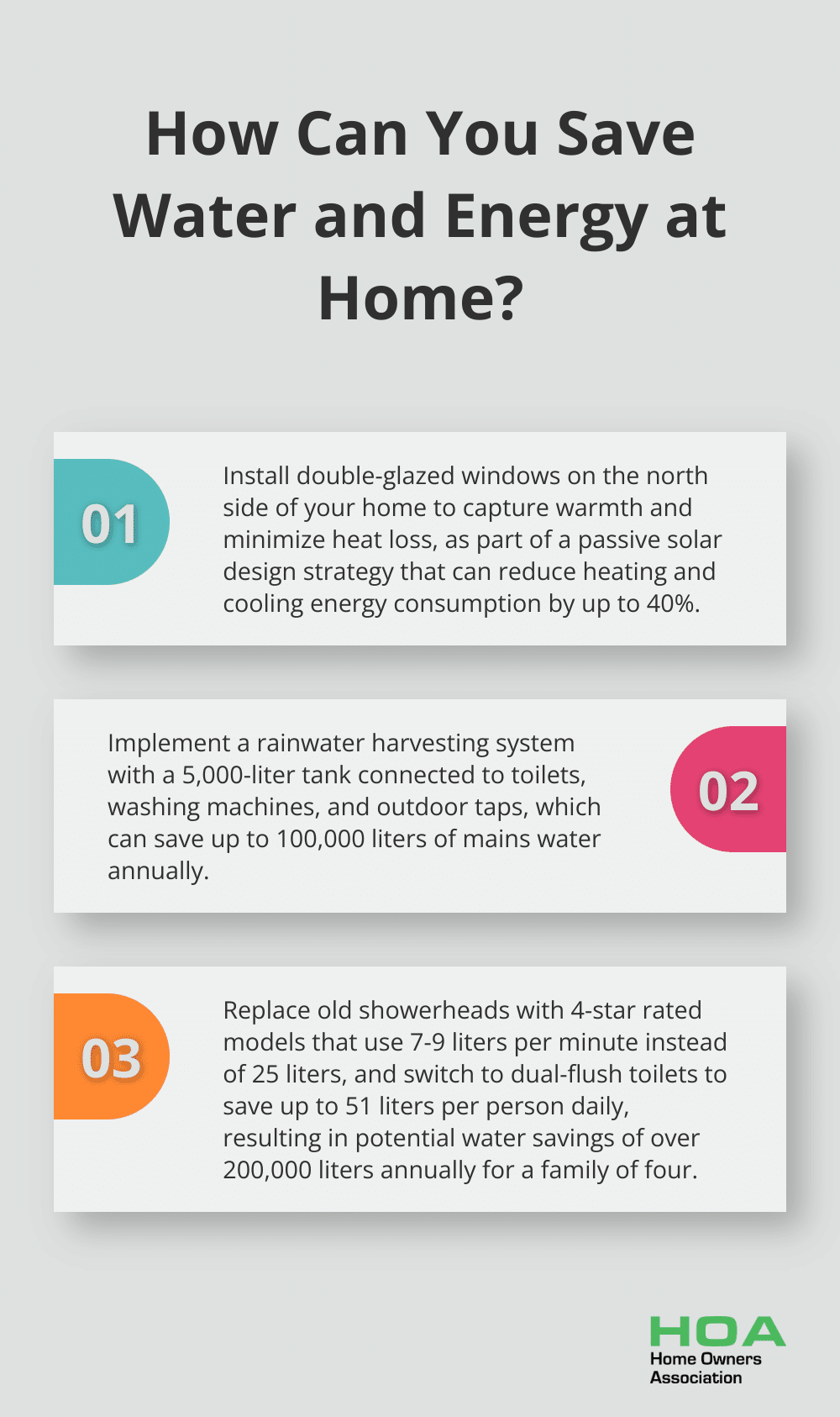
Sustainable living extends beyond personal choice to collective responsibility. Every eco-friendly house contributes to a more resilient and sustainable community. These homes use fewer resources, produce less waste, and often incorporate materials that actively combat climate change (through carbon sequestration).
We at Home Owners Association support Melbourne homeowners in their eco-friendly house building endeavors. Our resources and expert advice can provide invaluable support as you navigate sustainable construction. The journey towards sustainable living starts now, and there’s no better time to take that first step.





